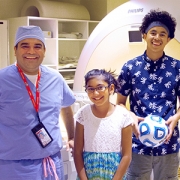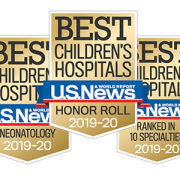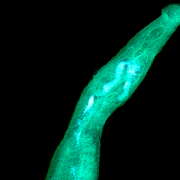Cancer update: tumor targeting, neurofibromatosis type 1 symptoms
June 6, 2016 –Targeting tumors more precisely, with fewer lasting side effects for kids
Pediatric patients with cancer are often treated with a cocktail of therapies to attack the disease through a variety of mechanisms. While this approach has been instrumental in saving children’s lives, the life-saving therapies can be accompanied by acute side effects, and the treatments may have lingering impacts as cancer survivors enter adulthood. Magnetic resonance-guided high-intensity focused ultrasound (MR-HIFU) holds the promise of surgically removing large tumors without exacting the same array of harsh side effects. Ultrasound relies on high-frequency sound waves to make diagnostic images, and those same sound waves can be used therapeutically to destroy tumors. Layering on MR imaging gives clinicians the ability to precisely guide the ultrasound therapy in real time. A study led by Children’s National Health System researchers and clinicians is using MR-HIFU for the first time in children to examine its safety and feasibility.
May 11, 2016 – Quantitative MRI criteria for optic pathway enlargement in neurofibromatosis type 1
Symptoms of neurofibromatosis type 1 (NF1) vary widely, but the condition is characterized by changes in skin pigmentation and growth of tumors along nerves. The research team sought to determine quantitative size thresholds for enlargement of the optic nerve, chiasm, and tract in children aged 0.5 to 18.6 years with NF1. The study, published in Neurology, found that quantitative reference values for anterior visual pathway enlargement will enhance development of objective diagnostic criteria for optic pathway gliomas secondary to NF1.











